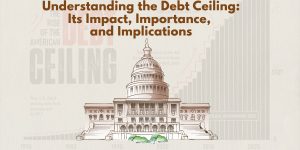Knowledge Is Power Use...
The group is dedicated to like minded friends who would like to discuss any topic which will help us have a healthy debate and discussion and help us in becoming better human beings. Please go through the details and understand the same well before joining the group as joining the group means agreeing to the same. The knowledge thus obtained can be used for the betterment of humanity and help us in turning out to be individuals working for a common good and a better world. Respect and tolerance for others opinion and views is a basic requirement in this process members would also not make any negative comments, character defamation and use abusive language and indulge in deviant behaviour. Whoever would want to join or comment in the group would not misuse the group and stray from its objective and would not indulge in any legal cases, arbitration, suits, claim damages and the like. Topics will usually start with a write up article.
Conservation:African Leopards- Protect Them And Save Wildlife
| Author | Posts | |||
|
African Leopards Closer to Protection From Trophy Hunts Africa’s great spotted cats stalk closer to safeguards: On Tuesday the U.S. Fish and Wildlife Service announced that all African leopards may qualify for “endangered” status under the Endangered Species Act. The Center for Biological Diversity and partners petitioned for the leopards’ protection earlier this year. The Humane Society of the United States, Humane Society International, International Fund for Animal Welfare, the Center for Biological Diversity and The Fund for Animals. Leopards are at risk of extinction across their African and Asian range, having suffered a population decline in sub-Saharan Africa of more than 30 percent in the past 25 years, in part due to unsustainable trophy hunting by Americans. Yet due to a loophole in place since 1982, hundreds of leopard trophies per year have been imported into the United States without proper scrutiny by the federal government or scientific experts. In 2014 hunters imported 311 leopard trophies into the United States. In making its decision, the agency found that the group’s petition presented substantial scientific evidence that endangered protections may be warranted. The decision kicks off a comprehensive review of the status of the species. “African leopard numbers are plummeting and as the largest leopard trophy importer in the world, the United States has taken a critical step toward ensuring that our consumption does not threaten the survival of this species,” said Teresa M. Telecky, director of the wildlife department at HSI. “This is a crucial step forward in saving these imperiled animals,” said Jeff Flocken, IFAW’s North America regional director. “We thank the U.S. Fish and Wildlife Service for recognizing that enhanced protections under U.S. law may be warranted.” “Initiating a status review of the species is long overdue,” said Anna Frostic, senior wildlife attorney for The HSUS, “and it is imperative that FWS expeditiously conclude this process and take action to increase oversight of African leopard trophy imports, as required by law.” “Leopards in Asia and northern Africa have long been recognized as endangered,” said Sarah Uhlemann, international program director at the Center for Biological Diversity. “And the United States must extend this same level of protection to all leopards to reverse their disturbing decline.”
|
You must be logged in to reply to this topic.










